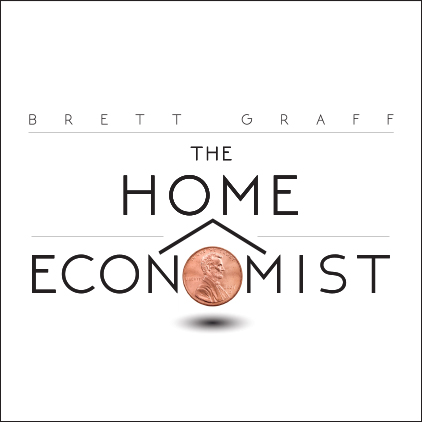A second home, you must be asking with startle and amazement. You can hardly pay for the first, let alone keep it clean. But get this: second-home buyers aren’t necessarily gazillionaries or grandparents. They’re people pretty similar to either you, your neighbors or those nice people you met last week who you totally forgot to call.There are two kinds of second home-buyers – those seeking an investment and those seeking a vacation home (which can also be considered an investment.) The typical investment home-buyer is 45-years old and has a household income of $85,700, according to the National Association of Realtors. The typical vacation-home buyer is 47-years old and earns $92,100. And keep in mind, when we say typical we mean median, meaning half the buyers are even younger and earning less money. Really, 40.1 million second home buyers are between ages 30 and 39-years old and 43.1 million of them are between 40-49 years old, says the NAR.
So should you become one of them? Here’s what you need to know.
1) A second home can be considered college savings or retirement planning. Yes, those goals are usually associated 401Ks and 529 plans, but remember, those are stock market investments and they’re anything but guaranteed. Most financial advisors will suggest you diversify and real estate holdings – right place, right time – can be bought low and sold high.
In fact, says the Realtor association, 6 percent of investment homes buyers who bought just last year have already resold, and another 8 percent are planned to be sold within a year. Most vacation home owners planned to hold on to their properties for some ten years.
2) A second home will lower your taxes if – and only if – you spend less than $1 million. (See, there are benefits to a budget…) Because if both your mortgages are less than $1 million you can still deduct the mortgage interest from your taxes, says Robert Dietz, a housing economist at the National Association of Home Builders. (If you’re going to rent the place out it’s a business cost and follows different rules, he says.)
3) You’ll need some cash. While your second home or condo can be relatively low-priced – at the moment there’s a one-bedroom condo in Orlando, Florida listed for $12,900 – you’ll still need some money. Most buyers paid cash but those who got a mortgage in 2012 put down about 27 percent of the purchase price. (For that Orlando condo you’d need $3483.)
4) Owning a vacation home doesn’t mean the same holiday year-after-year-after-year-after-year. Having a cute condo in the Poconos or a cozy mountain hideaway doesn’t mean committing to that location for all of eternity. Websites such as VRBO.com can help you rent the place (read: extra income when you’re not there) and on HomeExchange.com, you can find someone in, say, Paris or Los Angeles or Orlando who’s willing to swap places with you – just like Cameron Diaz in The Holiday.
5) You’ll become very popular. People you didn’t even know you knew liked you so darm much will announce they’re visiting over the holidays or staying a few weeks in your investment while their own home is tented for termites. Some of them will be delightful additions to the season. Others will track mud through the living room and pour their kids all the milk.
“Property flipping modestly increased in in 2012,” Yun said. “However, this isn’t flipping in the sense of what took place during the housing boom. Rather, investors generally are renovating and improving properties before placing them back on the market to resell at a profit.”
Six percent of homes purchased by investment buyers last year have already been resold, and another 8 percent are planned to be sold within a year. In the 2011 study, 5 percent of investment homes were already resold, and 8 percent were planned to be sold within a year. Overall, investment buyers plan to hold the property for a median of 8 years, up from 5 years in 2011.
Seventy-eight percent of all second-home buyers said it was a good time to buy, compared with 68 percent of primary residence buyers. “This suggests that second-home buyers tend to be a step ahead of general buyers in sensing a market recovery,” Yun said.
The typical vacation-home buyer was 47 years old, had a median household income of $92,100 and purchased a property that was a median distance of 435 miles from their primary residence; 34 percent of vacation homes were within 100 miles and 46 percent were more than 500 miles. Buyers plan to own their recreational property for a median of 10 years.
Buyers listed many reasons buyers for purchasing a vacation home: 80 percent want to use the property for vacations or as a family retreat, 27 percent plan to use it as a primary residence in the future, 23 percent plan to rent to others and 23 percent wanted to diversify their investments or saw a good investment opportunity.
Fifty-five percent of investment buyers said they purchased for rental income, 30 percent wanted to diversify their investments or saw a good investment opportunity, and 20 percent wanted to use the home for vacations or as a family retreat.
Eleven percent of vacation buyers and 16 percent of investment buyers purchased the property for a family member, friend or relative to use, often for a son or daughter to use while attending school.
Forty-five percent of vacation homes purchased last year were in the South, 25 percent in the West, 17 percent in the Northeast and 12 percent in the Midwest.
Thirty-six percent of investment properties purchased last in the South, 28 percent in the West, 20 percent in the Northeast and 16 percent in the Midwest.
Forty-seven percent of investment buyers said they were likely to purchase another investment property within two years, as did 37 percent of vacation-home buyers. Twenty-nine percent of vacation buyers said they were likely to purchase another vacation home within two years, as did 31 percent of investment buyers.
Approximately 42.8 million people in the U.S. are ages 50-59 – a group that dominated second-home sales in the middle part of the past decade and established records.
NAR’s analysis of U.S. Census Bureau data shows there are 7.9 million vacation homes and 43.7 million investment units in the U.S., compared with 75.2 million owner-occupied homes.
NAR’s 2013 Investment and Vacation Home Buyers Survey, conducted in March 2013, includes answers from 2,326 usable responses about homes purchased during 2012. The survey controlled for age and income, based on information from the larger 2012 NAR Profile of Home Buyers and Sellers, to limit any biases in the characteristics of respondents.








Leave A Comment